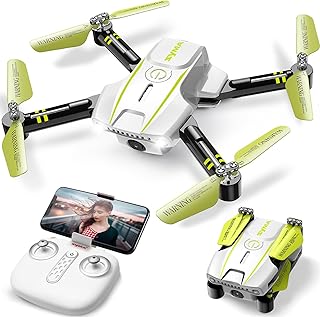The Future of SYMA Drones: What's Next?
SYMA has been a popular name in the affordable drone market, known for their user-friendly designs and competitive pricing. However, the drone landscape is constantly evolving, and SYMA needs to adapt to stay relevant. Here are some potential avenues for their future:
1. Focusing on Niche Markets:
* Educational Drones: SYMA could offer drones specifically designed for educational purposes, integrating coding capabilities and STEM learning elements. This could attract schools and educators looking for affordable tools for teaching drone technology.
* Recreational Drones with Enhanced Features: Instead of just competing on price, SYMA could focus on developing drones with unique features for recreational users. This could include advanced camera capabilities, obstacle avoidance systems, or integrated AI features for autonomous flight.
* Specialized Drones for Specific Applications: Exploring drones tailored for specific applications like agriculture, inspection, or even delivery could offer niche market dominance.
2. Embracing Technology:
* AI Integration: Integrating AI for autonomous flight, obstacle avoidance, and even object recognition would enhance user experience and unlock new possibilities.
* Improved Battery Technology: Longer flight times and faster charging capabilities would be a game changer, especially for recreational users.
* Improved Camera Quality: Higher resolution cameras with stabilization features would significantly enhance the video and photography capabilities of SYMA drones.
3. Building a Community:
* Active Online Forums and Support: Creating a thriving community around SYMA drones through online forums and support groups would foster loyalty and encourage user engagement.
* Educational Content and Tutorials: Developing comprehensive tutorials, videos, and resources would empower users and attract a larger audience.
4. Sustainability and Responsibility:
* Developing Eco-friendly Drones: SYMA could prioritize sustainable practices in its manufacturing process and incorporate eco-friendly materials for a positive environmental impact.
* Promoting Ethical Drone Use: Emphasizing responsible drone operation and adhering to regulations would build trust and credibility with the public.
Challenges and Considerations:
* Competition from Established Brands: SYMA needs to differentiate itself from major drone manufacturers like DJI and Parrot, which are known for their advanced technology and features.
* Maintaining Affordability: Balancing innovation with affordability will be crucial for SYMA to remain competitive in the budget-conscious drone market.
* Meeting Growing Regulatory Demands: Navigating increasingly complex drone regulations and ensuring compliance will be essential for future success.
Conclusion:
SYMA has the potential to thrive in the future by focusing on specific niches, embracing technological advancements, building a strong community, and prioritizing sustainability. By adapting to the ever-changing drone landscape and understanding user needs, they can solidify their position as a respected player in the drone industry.


